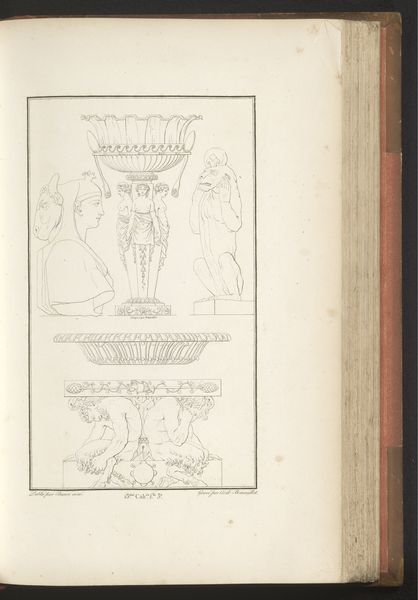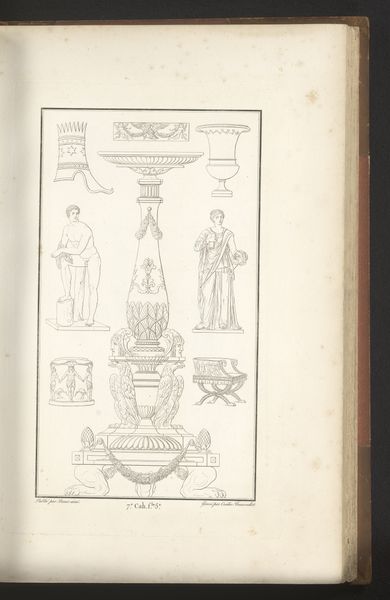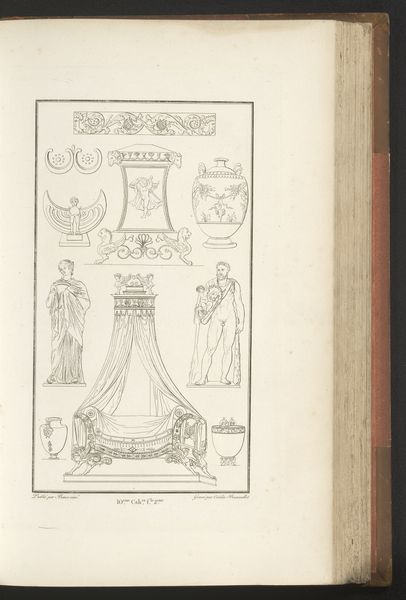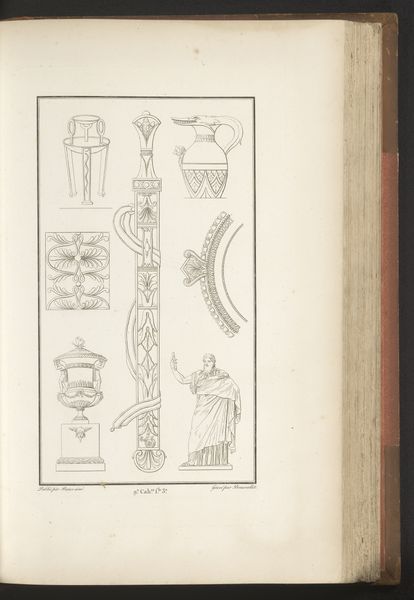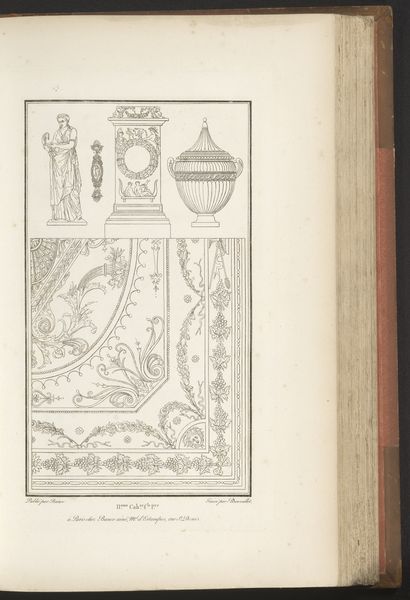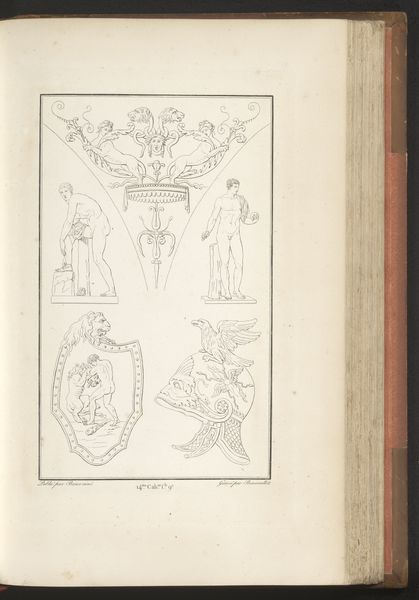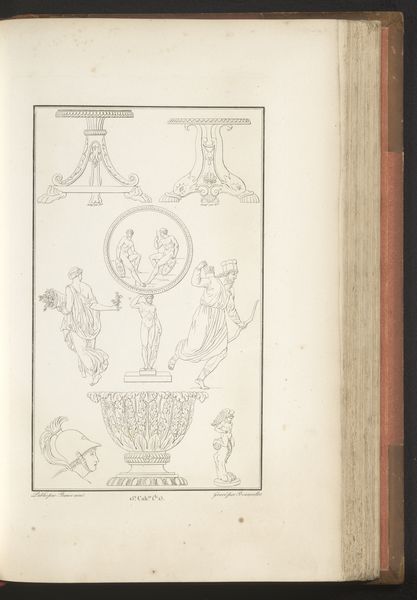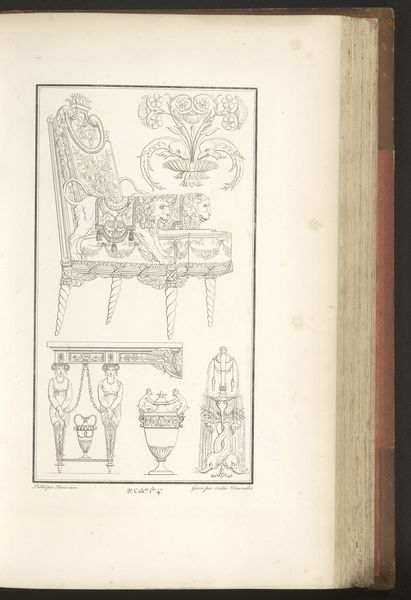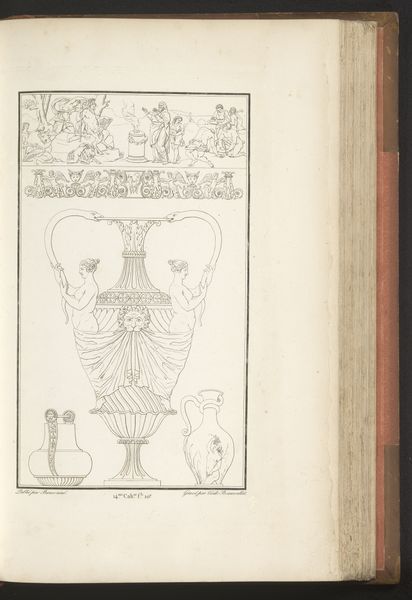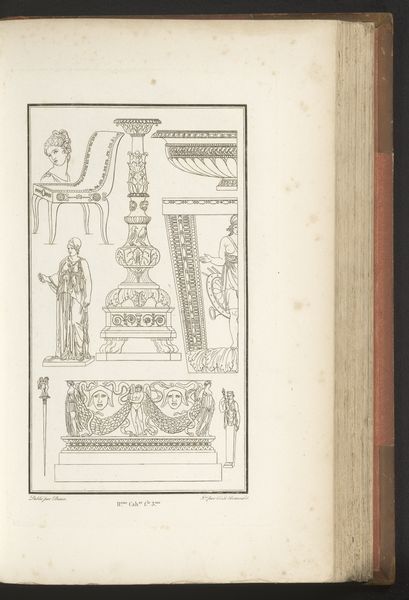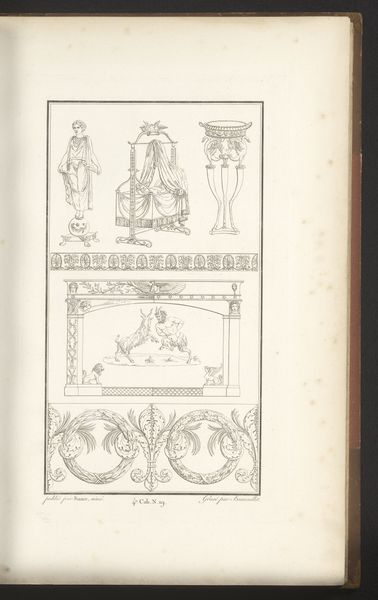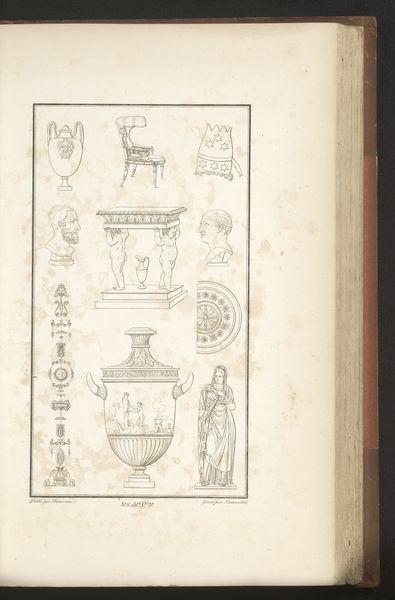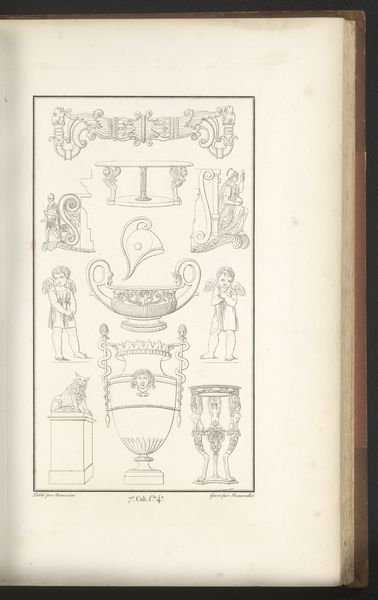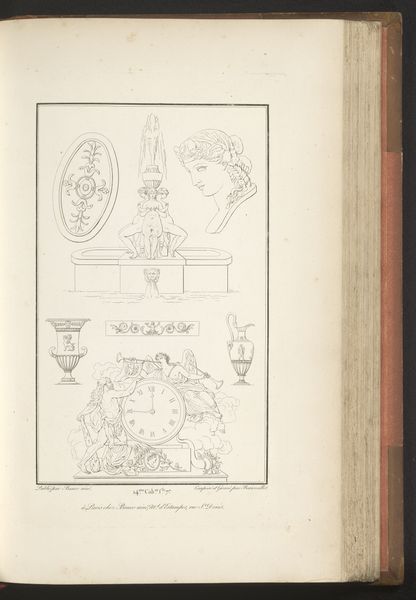
drawing, paper, ink
#
drawing
#
neoclacissism
#
classical-realism
#
figuration
#
paper
#
ink
#
academic-art
Dimensions: height mm, width mm
Copyright: Rijks Museum: Open Domain
Curator: Look at this neoclassical drawing; it's like peering into a sculptor’s sketchbook. Pierre-Nicolas Beauvallet created "Altaar op voet" in 1820, using ink on paper. What captures your attention first? Editor: Well, beyond the sheer draughtsmanship, it has this pristine, almost sterile feel, doesn’t it? The scene is grand and symmetrical, yet lacks the messy fingerprints of reality. Are we seeing a blueprint for power here, perhaps? Curator: You could say that. Neo-classicism, emerging after the French Revolution, consciously evokes the aesthetics of ancient Greece and Rome, cultures that have historically legitimized imperial power. Beauvallet's altar design suggests a desire to impose order after the tumultuous revolutionary years. Editor: So, not just art for art's sake, but art to send a message. I notice the triumvirate of figures surrounding the column... who are they, and what are they holding up? Curator: Their exact identities are unclear, though their draped attire suggests goddesses or nymphs associated with the natural world. As for what they're supporting, it appears to be a grand vessel of some kind topped by an eternal flame and flanked by an idealized helmet and flagon. These are, no doubt, allegorical representations of peace, valor, or prosperity. Editor: And their delicate embrace around that fluted column evokes fragility rather than strength, oddly enough. There's also something… static. I mean, they’re frozen in perfect poses; it lacks movement, a breathing quality. Did academic artistic constraints stiffen this artist’s hand, maybe? Curator: Possibly! But also, the style reflects a conscious rejection of Rococo exuberance in favor of austere moral and civic virtues. Remember, post-revolution, the desire to "purify" culture was strong. Still, that very restraint gives the piece its particular haunting character. Editor: You're right. This design certainly mirrors its moment, with social aspirations of stability meticulously inked onto the page. Even a design sketch becomes a window into ideology. Thanks, I appreciate it! Curator: And for me, it is like glimpsing not just an object but the longing behind its making – the very human yearning for an ordered, ideal world.
Comments
No comments
Be the first to comment and join the conversation on the ultimate creative platform.
